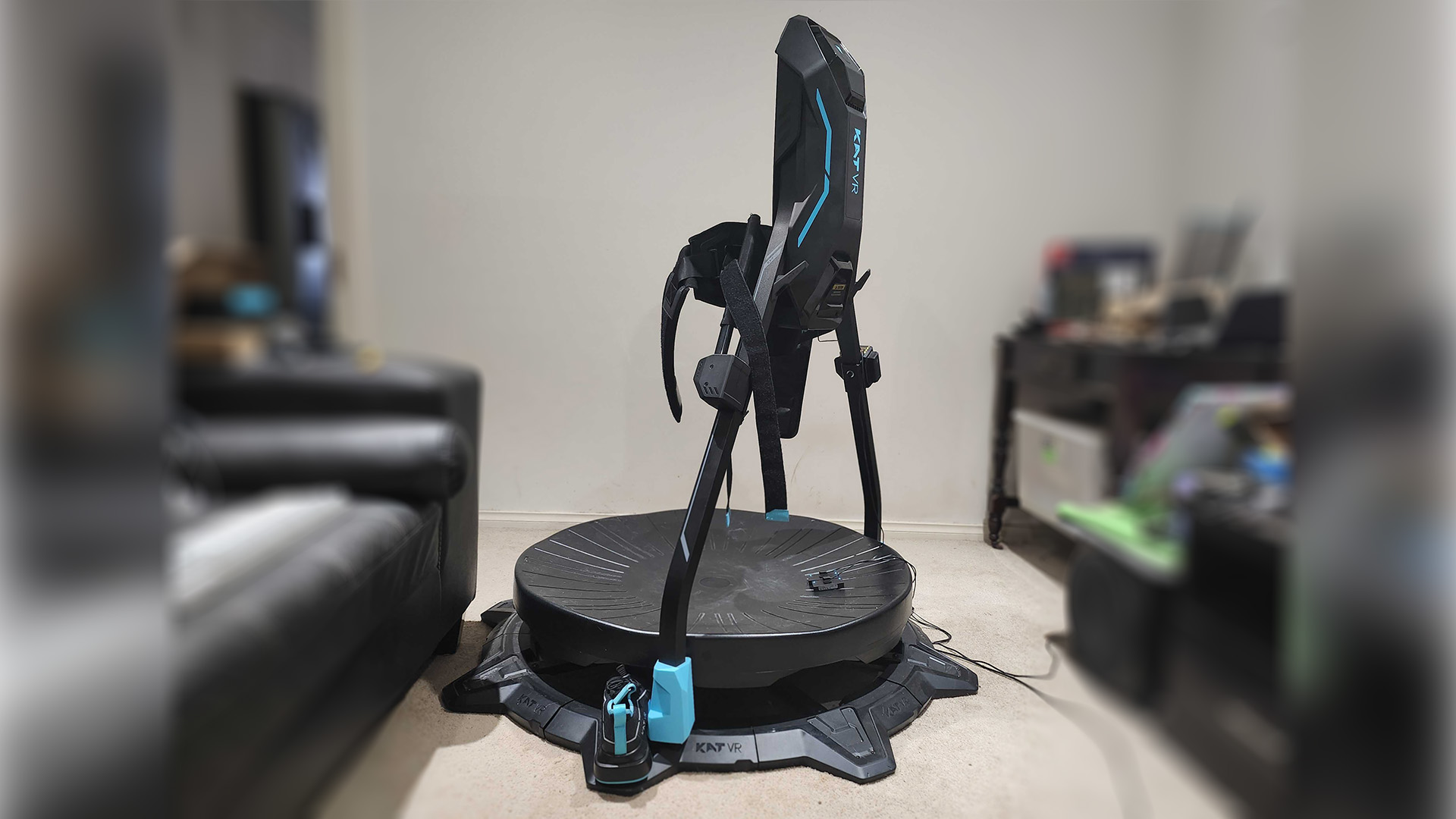Our Verdict
If you love your VR enough to consider spending the money on this, then you probably should.
For
- Sci-fi coolness
- Easy to learn
- Good exercise
- Infinite VR space
Against
- A huge heavy thing to set up that then lives in your house
- Far more effort than normal gaming
- Needs more games with it in mind
PC Gamer's got your back
VR treadmills are the kind of tech that make you feel like you're in the future just by virtue of existing. I've dreamed of trying one out for a few years now, wondering if they could possibly live up to both the marketing hype and my own hopes. Just looking at one raises expectations with the large harness and blue underglow, plus these are huge pieces of unwieldy kit that don't exactly come cheap.
But let's face it, there's not a lot in VR with any complexity that feels particularly good or true to life right now, so how good or true to life can omnidirectional walking and running be? After having hands on with the Kat VR C2+ for a couple of weeks now, the answer is it's not true to life at all. But it doesn't have to be, because it's something else.
To start with, everything about the Kat VR C2+ treadmill feels larger than life. In my case It comes in several boxes, over about four different deliveries, one of which needed a palette. It's huge, and while not difficult to set up will take some time thanks to how unwieldy parts can be. There were some frustrations, like screws needing to have their coatings worn down to fit that add further time to the process.
I am not an elegant creature and had many bruises from the build with all its heavy parts. On the upside, witnessing the sturdy materials and constructing it myself gave me absolute confidence to happily throw myself around once strapped into the harness. Which again, is very helpful, particularly for someone as inelegant as myself.
Supported weight: Below 130kg
Supported height: 1.55–2 metres
Footprint: 1.2 m
Compatible: Pico, Steam VR, Vive, Meta (Nexus module required without PC), PlayStation (requires Pisystem)
Price: $1,499.00 USD
Having the Kat VR C2+ in my small living space turns its 1.2m footprint into a dedicated VR space that feels bigger than anything I could otherwise achieve. You do need a bit extra space for flailing arms, as hitting a too close wall unexpectedly is a painful experience. When I'm strapped into it, I actually feel much more confident of my movements than I did using VR untethered. I know I'm not going to randomly stub my foot on the couch or fall over without support. I did still have to worry about not overextending my arms and flailing into the nearby TV, but otherwise in some ways using the treadmill feels safer than not.
It also works with tonnes of different VR headsets and configurations. I'm using it with the Meta Quest 2 linking to my PC and haven't had any problems getting it all working together. With the treadmill and the Quest I don't have any cables near my body which is always my preference. There's also the KatVR Nexus attachment that allows direct connection between the treadmill and Meta headsets. It's still quite new, and isn't as good as the PC experience. You can't adjust your Kat settings without exiting games, and it doesn't feel as smooth. If all you have is a Quest it's very cool, but definitely a cut down experience compared to PC.
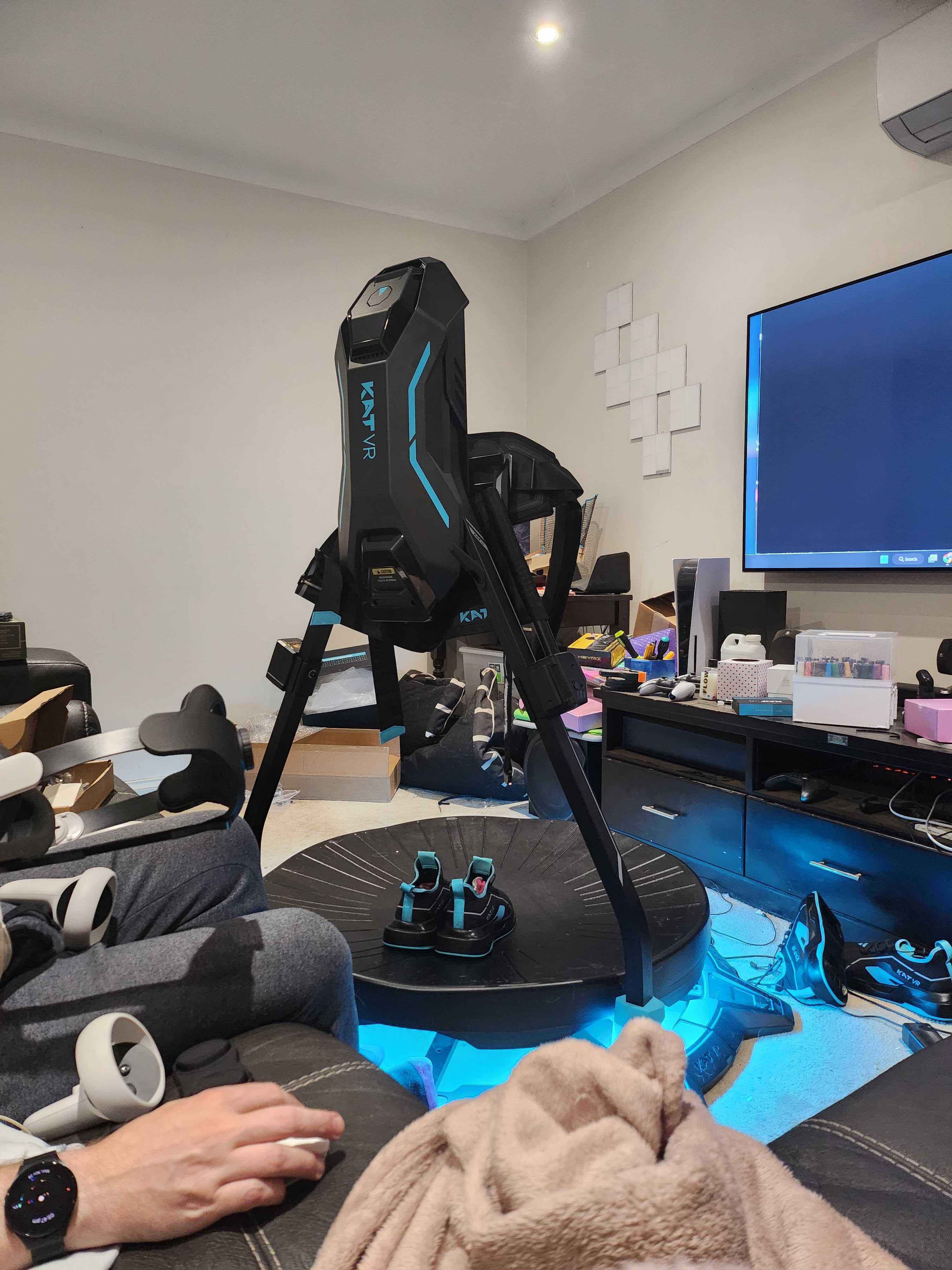
Once you're set up and connected by whatever method you choose, you also need to have three separate sensors charged and paired. It's not difficult to set up but it is something on top of. Thankfully they all charge from the treadmill itself, so it's easy enough to manage. From there, strap in and get ready to feel even stupider than you've previously felt in VR.
Walking in one of these things absolutely takes a little bit of figuring out, yet so far everyone I've shown has also got the basic concept within a few minutes. It takes special shoes, and you only get one pair with the treadmill so if you've a family with different sized feet you may need to invest in extras. The shoes have several velcro tabs on them to create more resistance on the base, and you can take them off as you gain confidence. Removing them all delivers the best results because sliding is a big part of how the treadmill works.
I've found different techniques depending on the game and what I want to achieve, but it's a sort of run-step with a slide back. This can start to feel quite natural when you're in a free flowing environment and the base does much of the work in sliding you back. How it feels is also largely game dependent, as each game affects how well the treadmill integrates. Usually it's set up through controller replacement bindings, like setting the walk to sticks, and in my trials some games handle it better than others.
@pcgamer_mag ♬ original sound - PC Gamer
When games don't work so well, it feels like your typical slightly janky VR, a bit like how home VR felt even just a few years ago. It's fun and novel but not something you necessarily get enough out of for the effort you put in. Walking and running around in Skyrim VR, for example is quite fun but it is also so much work, and doesn't feel like real movement. Especially in the Elder Scrolls High Fantasy setting which is just filled with tight corridors and stairs in the early sections.
Using the VR treadmill isn't hard, but it also isn't easy.
No Man's Sky, on the other hand, you can really get lost in the fantasy of it all. The motion is smooth and tracks far better than others, and you're on nice open planets to explore most of the time. Plus being hooked into all the equipment lends itself to the mental image of a space suit far better. It's the kind of thing I could see myself spending a lot of time in just getting lost exploring worlds.
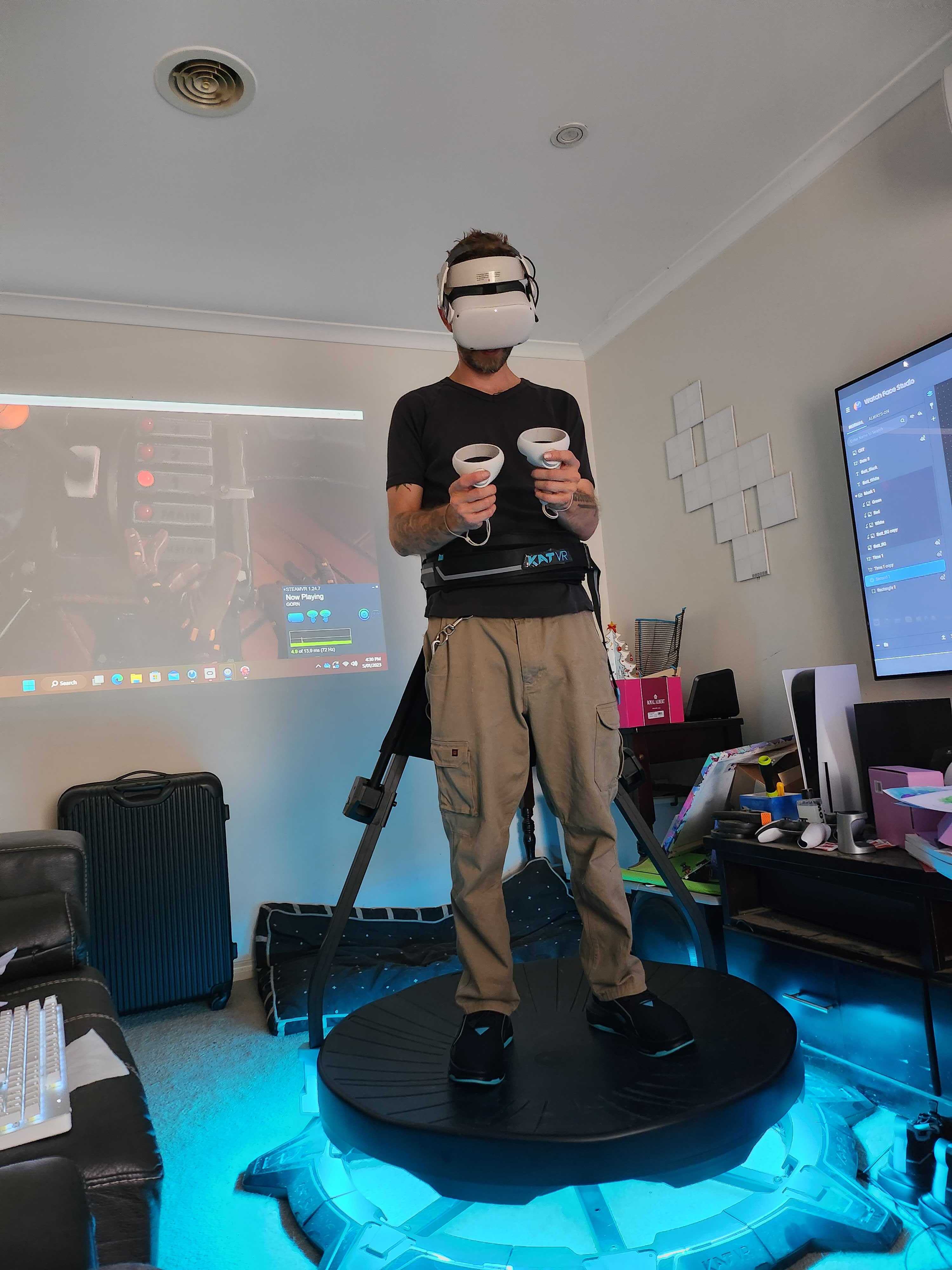
Using the VR treadmill isn't hard, but it also isn't easy and it's a pretty weird thing for the body to be doing. Fitness and strength plays a part as to how much you can do, be it stamina for longer sessions, or strength for certain actions. The Kat VR software has a section where it tracks steps and activity levels and things, and while potentially great for fitness it is a bit of a barrier to use and well worth considering before you drop the money.
This treadmill also comes with the detachable vehicle hub, essentially a flip down seat that attaches to the main structure. It gets in the way of the Kat VR's sensor button, which you need to press a fair bit, but otherwise is a welcome addition. Flipping it down gives you an immediate seat, which is super handy for moments where you just need a rest.
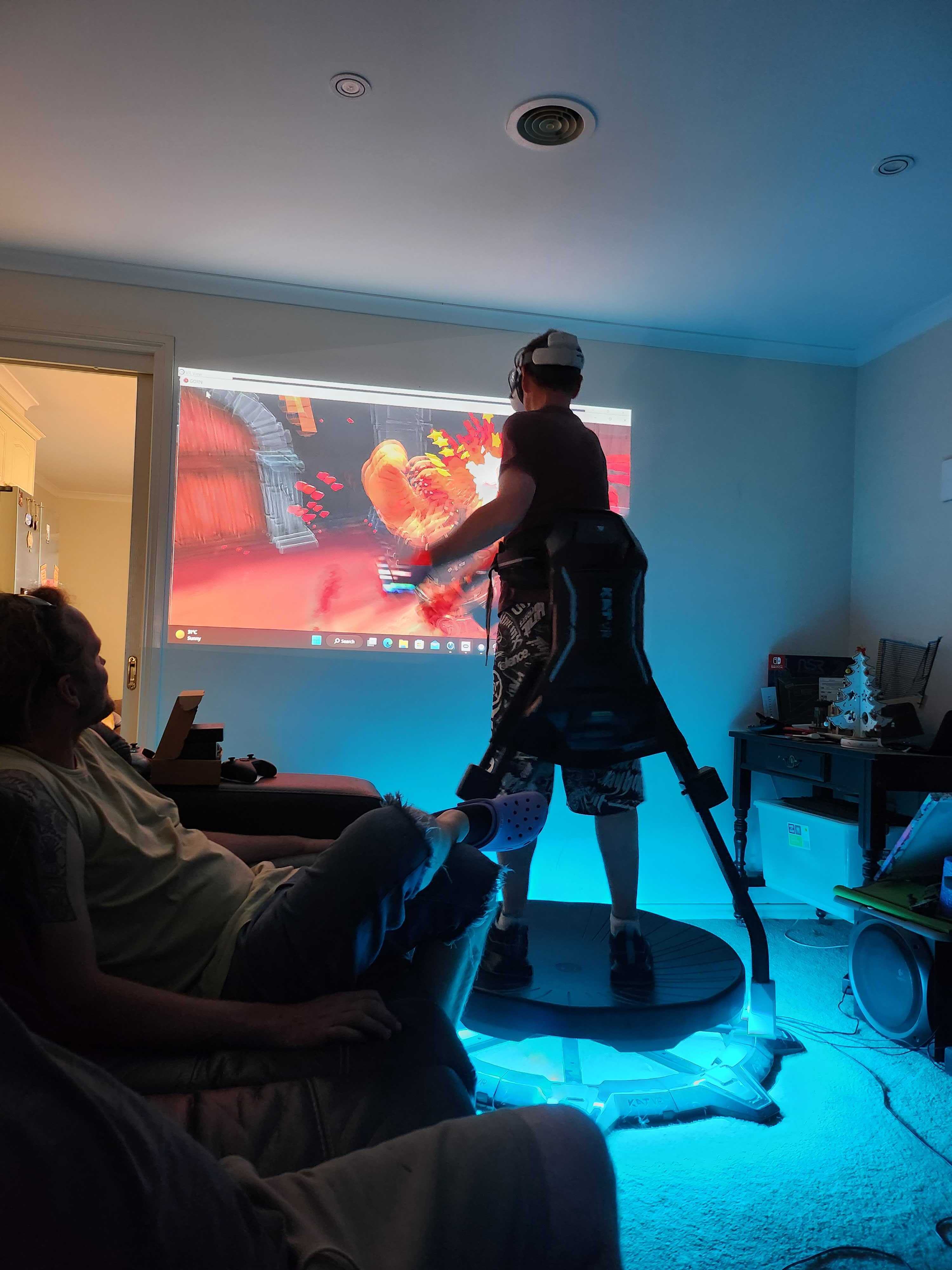
You can keep playing just using the thumbsticks on your controller while you're seated and in some configurations it also allows you to twist and push with your feet to control the vehicles. It means in the case of games like Skyrim VR and No Man's Sky when you move to your mount or vehicle you don't have to keep standing up on the treadmill and things feel a bit more natural. But there's still plenty of awkward moments in finding the seat, hitting the sensor button, changing the settings, and all those little extra pieces that detract from the experience.
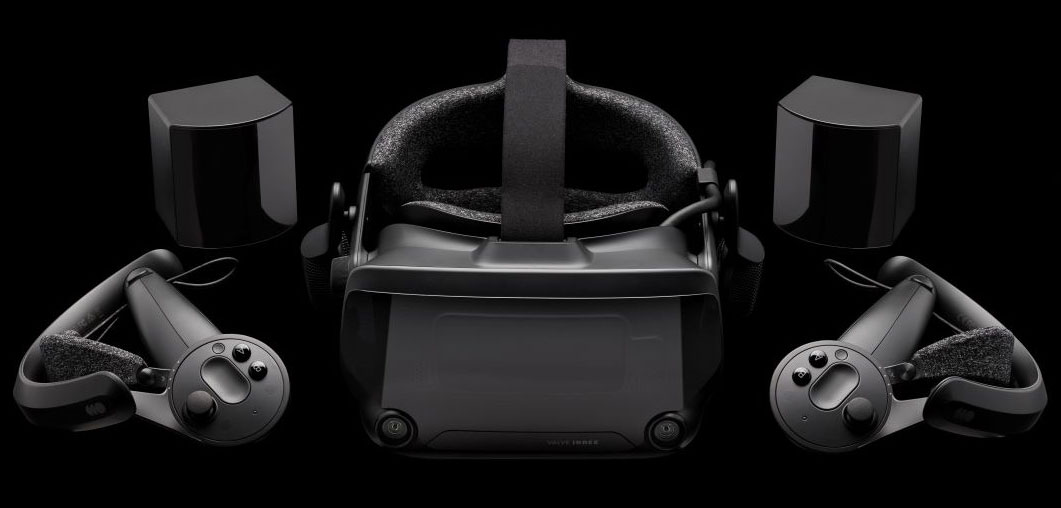
Best VR headset: which kit should you choose?
Best graphics card: you need serious GPU power for VR
Best gaming laptop: don't get tied to your desktop in VR
When it's all working and you're in the moment, walking around in a VR world is wild and a completely liberating feeling for the medium. That little bit of brain deception magic is definitely there, and I'll be trying more games in order to find it. It feels like the Kat VR treadmill is currently limited more by the way movement translates to the games and my own fitness level.
The biggest question I keep asking myself about this device is whether or not I think it's 'the future of VR', and I'm still not sure. But if I open that question up to 'a future' then the answer is definitely. I've played VR games in large open warehouses and haven't felt as free or safe in my movements as I do in this machine. For people who are seriously into their VR in a physical way, I can't think of a better way you can currently enhance the experience than with the Kat VR C2.
If you love your VR enough to consider spending the money on this, then you probably should.

Hope’s been writing about games for about a decade, starting out way back when on the Australian Nintendo fan site Vooks.net. Since then, she’s talked far too much about games and tech for publications such as Techlife, Byteside, IGN, and GameSpot. Of course there’s also here at PC Gamer, where she gets to indulge her inner hardware nerd with news and reviews. You can usually find Hope fawning over some art, tech, or likely a wonderful combination of them both and where relevant she’ll share them with you here. When she’s not writing about the amazing creations of others, she’s working on what she hopes will one day be her own. You can find her fictional chill out ambient far future sci-fi radio show/album/listening experience podcast right here. No, she’s not kidding.
